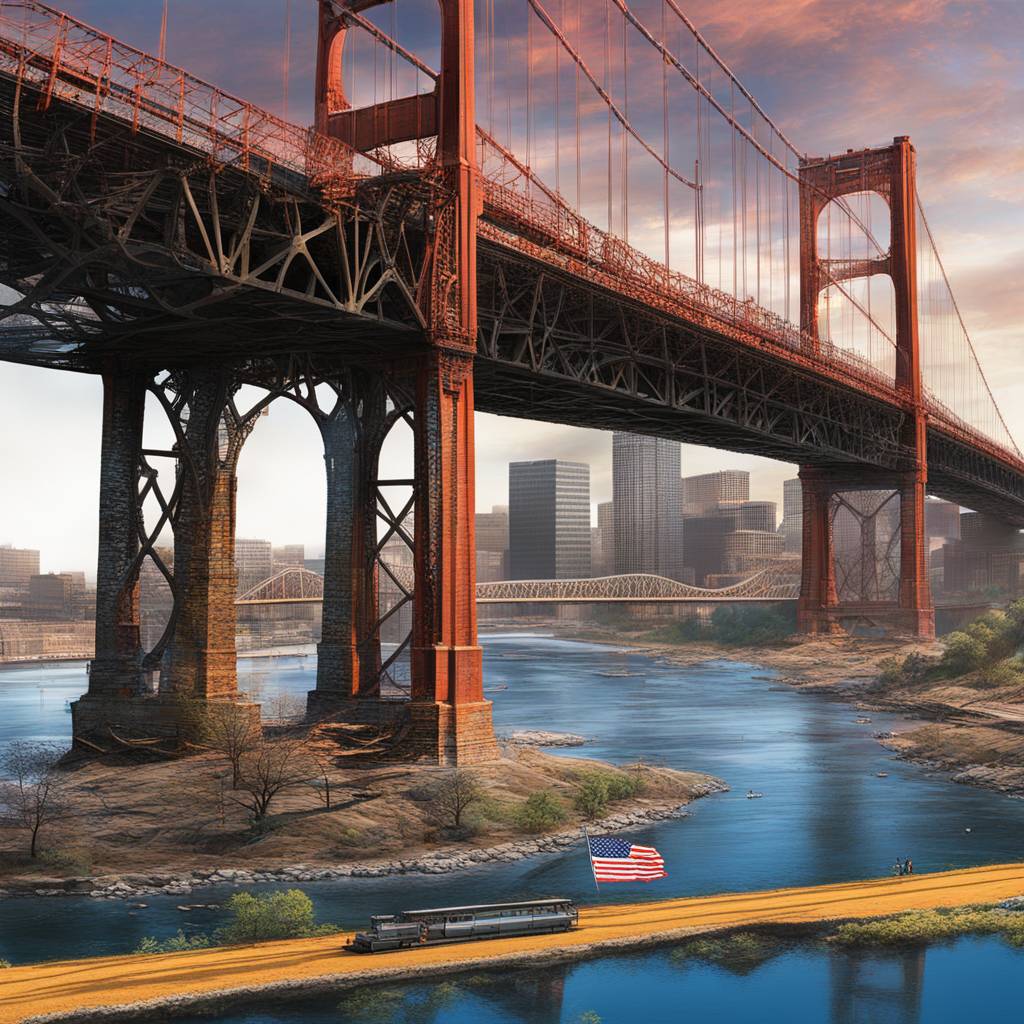A recent incident involving a container ship colliding into the Francis Scott Key Bridge in Baltimore has drawn attention to potential vulnerabilities among some of America’s over 600,000 bridges. The Key Bridge, which stood for 47 years, fell in less than a minute when a ship weighing over 100,000 tons collided with it. While such collapses may not be entirely predictable, they are not unheard of, and this one may have been avoidable. Recent federal safety inspections deemed the Key Bridge to be in “fair” condition, with Maryland’s governor stating that the bridge was “fully up to code.” However, thousands of US bridges are in poor shape.
According to the American Society of Civil Engineers and the federal government, in America, 46,000 bridges have aging structures and are in poor condition, with 17,000 at risk of collapse from a single hit. Engineers and infrastructure experts highlight that extreme weather events, heavier trucks, and collisions from larger container ships pose significant risks to US bridges. States inspect US highway bridges at least once every two years and classify them as “good,” “fair,” or “poor,” with structurally deficient bridges facing closures or weight restrictions.
While structurally deficient bridges are not inherently unsafe, they require significant investments to maintain. The number of structurally deficient bridges in the US has decreased in recent years, but the rate of spending on improvements has slowed. There is an estimated $125 billion backlog of bridge repairs nationwide, but the $1.2 trillion federal infrastructure law passed in 2021 includes funding for roads, bridges, and major infrastructure projects, which could help pay for some bridge improvements.
Climate change and heavier trucks are also concerns for older bridges in the US. Nearly 21,000 bridges are vulnerable to extreme weather events, and earthquakes pose a significant threat as well. Bridges are strained by trucks that exceed their initially designed capacity, leading to metal fatigue and cracking. Bigger vehicles, aging infrastructure, and extreme weather events all contribute to the need for improvements to prevent potential disasters.
More than 17,000 bridges are vulnerable to collapse from a single hit, known as a “fracture critical” bridge. The Key Bridge was identified as fracture critical by the National Transportation Safety Board. Bridges must be improved or protected against larger modern vessels like the Dali, which was almost twice the length of ships when the Key Bridge was built. Redundancies, such as dolphins or fenders, can help protect bridges from ship collisions, and adding these counter-protections is quicker and more cost-effective than building new bridges.
Between 1960 and 2015, 35 major bridges collapsed worldwide due to ship or barge collisions, resulting in 342 deaths. Recent incidents, including the Key Bridge collapse in Baltimore, illustrate the danger posed by larger ships to older bridges. To minimize the risk of ships bringing down bridges, counter-protections and safety measures need to be implemented. Ananth Prasad from the Florida Transportation Builders’ Association emphasizes the importance of building redundancies and protections around bridges’ danger points to prevent potential disasters. As the size and capacity of ships increase, it is essential to prioritize the safety and integrity of bridges to ensure the safety of bridges and prevent future disasters.













